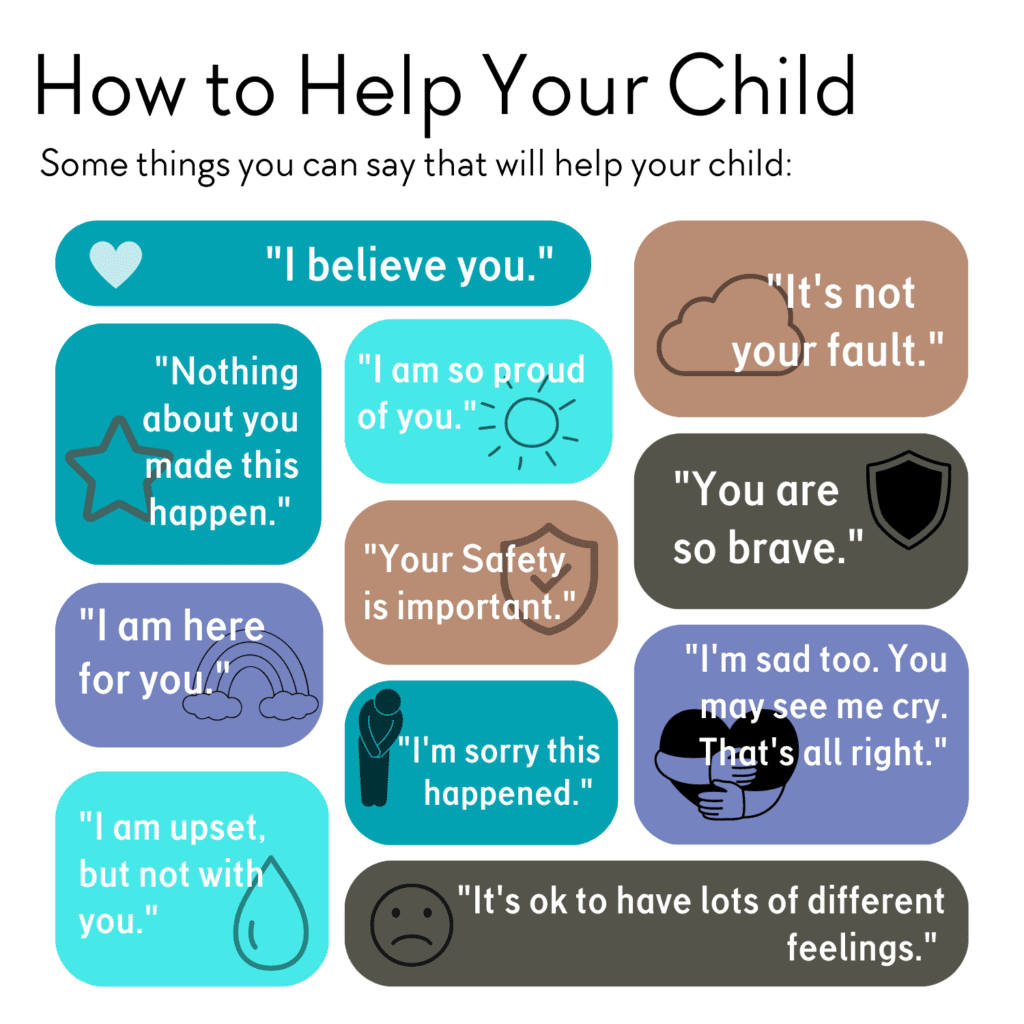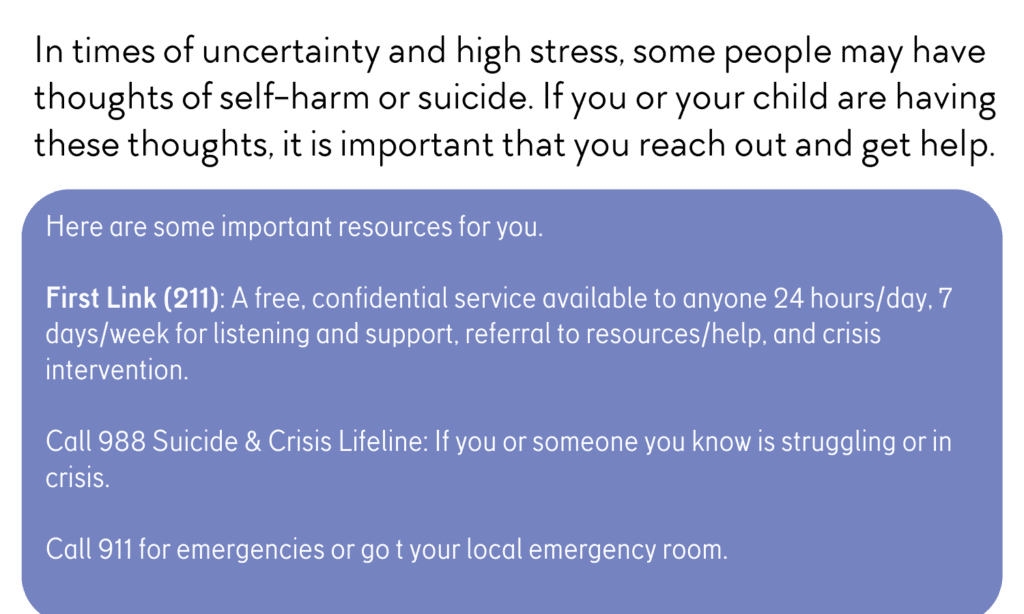Safety First—Help Your Child Feel Safe
- Work with your team to create a safety plan.
- Let your child know what will happen next (as appropriate for them).
- Have a predictable routine.
Allow Expression Of Feelings
- Help your child name how they feel: “scared,” “happy,”
“angry,” “sad.” Tell them it’s OK to feel that way. - Help your child express feelings in ways that won’t hurt.
Follow Your Child's Lead
- Different children need different things.
- Listen to your child and watch their behavior to figure
out what they need.
Express Support Of Your Child's Experience
- If your child wants to talk, be there to listen, but don’t ask
questions about details. - Focus on the child’s feelings and not the details.
Ties—Reconnect With Supportive People, Community Culture, and Rituals
- Continue simple family traditions to remind you and your family of your way of life and offer hope.
- Encourage your child to spend time with their friends and supports. This can be helpful and provide some normalcy.
Your Child Needs You
- Just being with your child, even when you can’t fix things, helps your child.
- Take care of yourself. Get support when needed.
Adapted from the National Child Traumatic Stress Network. After Crisis: How Young Children Heal.


The parent is the child’s best advocate, so do not hesitate
to ask questions of your team.
“I am so grateful for the support while we go through this with my child. It’s appreciated so much.”
